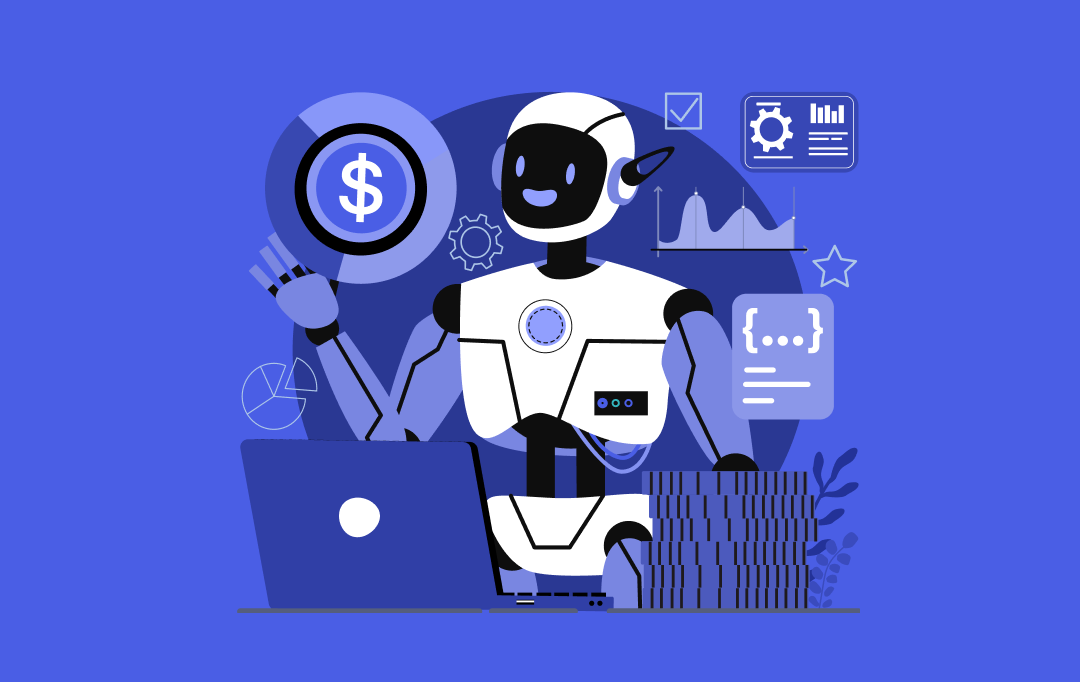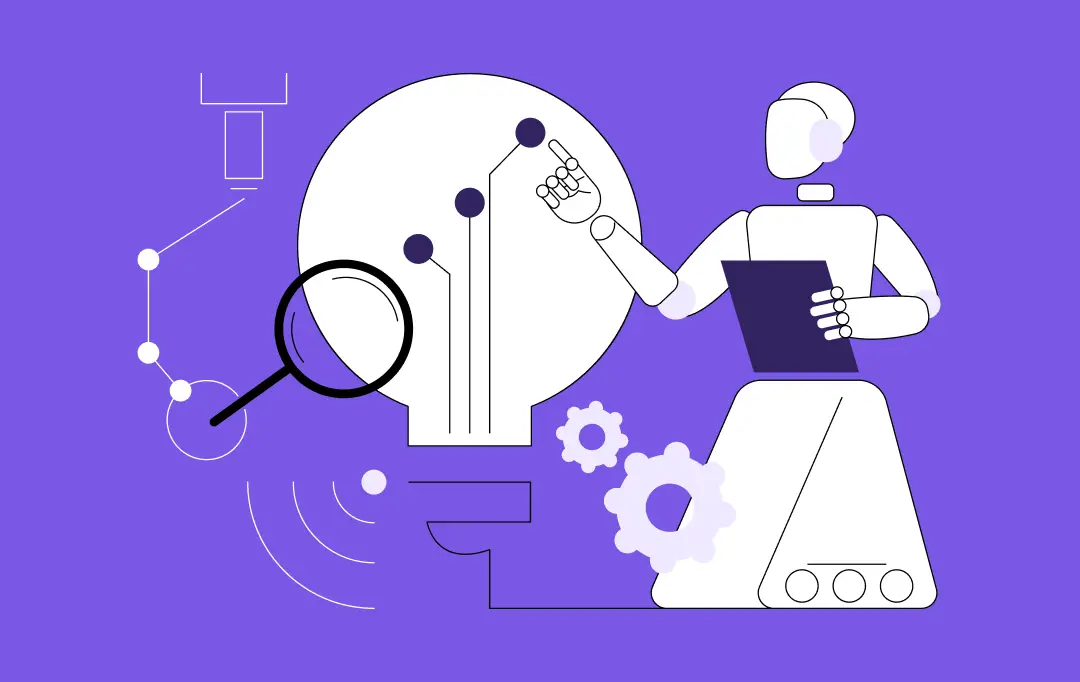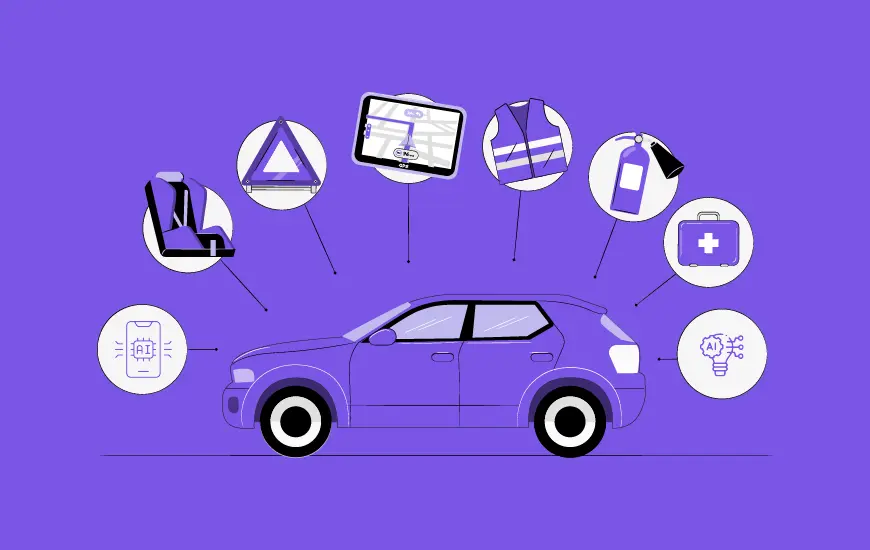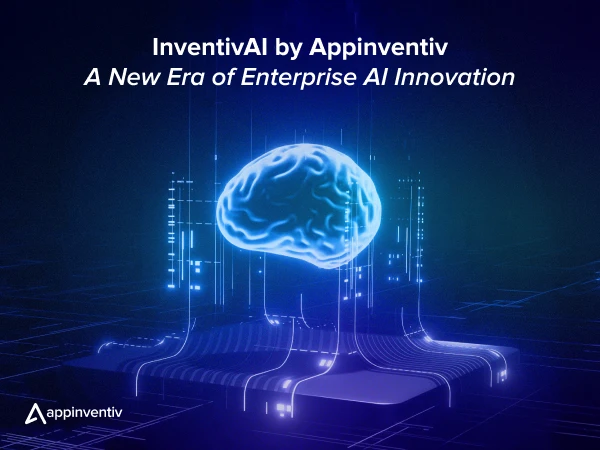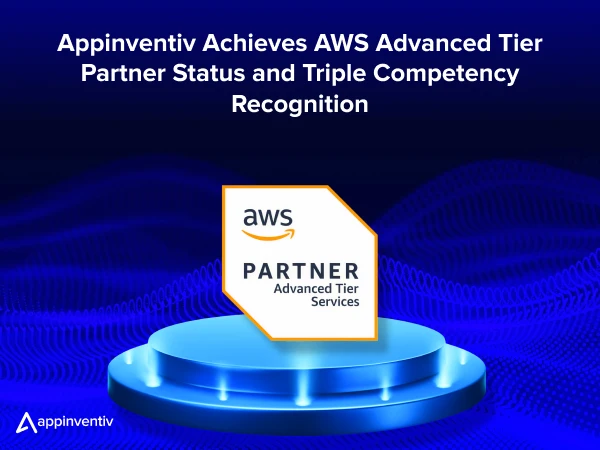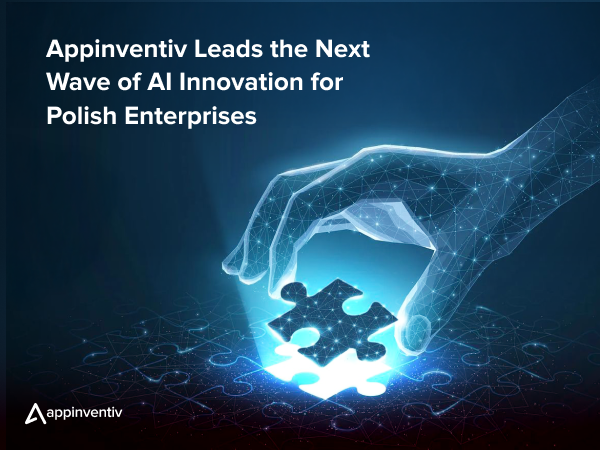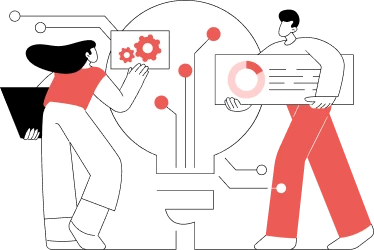- Digital Transformation Strategy for Australian Enterprises: Why It is Critical Now
- Understanding the Australian Context: Overcoming Obstacles on the Digital Journey
- Resistance to Change: Strategies for Employee Engagement and Communication
- Legacy Systems Integration: Approaches to Modernization and Interoperability
- Data Silos and Quality Issues: Unifying Data for a Single Source of Truth
- Cybersecurity Risks: Proactive Measures and Incident Response
- Skill Gaps: Investing in Training, Recruitment, and Partnerships
- Budget Constraints: Demonstrating ROI and Phased Investment Strategies
- Vendor Selection: Choosing the Right Technology Partners
- Key Opportunities for Australian Businesses
- Access to the Latest Emerging Technologies
- Taking Advantage of Cloud Computing
- Improved Customer Experience (CX)
- Operational Efficiency & Automation
- New Business Models & Revenue Streams
- Competitive Edge
- The Practical Roadmap: 7 Key Steps to Digital Transformation
- Step 1: Define Your Vision & Strategy (The "Why" and "What")
- Step 2: Evaluate Current Capabilities & Gaps (The "Where Are We Now?")
- Step 3: Prioritize Initiatives & Build a Phased Approach
- Step 4: Invest in the Proper Technologies (The "How - Technology")
- Step 5: Develop a Digital Culture & Talent Development (The "How - People")
- Step 6: Implement & Integrate Solutions
- Step 7: Measure, Iterate, & Adapt (Continuous Improvement)
- Australian Industry-Specific Use Cases for Digital Transformation
- Healthcare
- Financial Services
- Manufacturing & Resources
- Retail
- Agriculture
- Future Outlook: Trends That Are Shaping Australian Digital Transformation
- Elevate Your Journey to a Digitally Transformed Australian Enterprise with Appinventiv
- FAQs
- Q. What is digital transformation for Australian businesses?
- Q. What are the main challenges of adopting a digital transformation strategy for Australian enterprises?
- Q. How long does digital transformation take for an enterprise?
- Q. What technologies are crucial for a digital transformation strategy for Australian businesses?
- Q. How can I find the right digital transformation partner in Australia?
- Q. How is AI changing digital transformation strategies in Australia?
- Q. How can Australian businesses benefit from digital transformation?
- Q. What is the future of digital transformation for Australian enterprises?
- Q. What business areas should we prioritize for digital transformation in Australia?
Key takeaways:
- Australian businesses must embrace digital change to remain competitive in today’s market.
- Successful digital transformation requires a focus on people, processes, and technology.
- Overcoming resistance to change and outdated systems needs a clear strategy and the right partners.
- Industry case studies show that effective digital transformation delivers real business value and strong ROI.
Australia is at a turning point in its digital development. The Australian digital transformation market has hit $18.5 billion in 2024 and is set to experience explosive growth to $84.7 billion by 2033 at a CAGR of 18.4%. This isn’t merely a market opportunity—it’s a basic transformation in the way Australian businesses need to operate to survive.
Digital transformation strategy for Australian businesses has transitioned from a competitive asset to a dire necessity. Pressure arises from all directions: changing customer expectations, intense competition, and the pressing need for operational effectiveness in turbulent economic times.
Introducing digital transformation, though, is not merely about embracing the newest technologies. Digital transformation is about radical change—it entails changing what businesses do and how they do it.
For Australian businesses in particular, a digital transformation strategy includes:
- Customer-focused innovation – Redesigning customer journeys and experiences
- Operational excellence – Automating and optimizing core processes using data and insights
- Business model innovation – Developing new digital products, services, and revenue streams
- Workforce change – Creating digital skills and a culture of innovation
- Technology base – Deploying cloud infrastructure, leveraging data platforms, and developing AI integration capabilities
This in-depth blog offers an end-to-end digital transformation strategy for Australian enterprises. From determining your current level of digital maturity to adopting a phased approach that produces significant business results, you’ll get it all here.
Ready to begin your digital transformation journey?
Digital Transformation Strategy for Australian Enterprises: Why It is Critical Now
Prior to initiating any digital transformation program, Australian businesses need to properly evaluate their current digital maturity. As of 2024, more than 45% of Australian companies have initiated digital programs, reflecting the ongoing trend towards digital-first business models in the country.
While financial and banking services remain at the forefront of adopting AI, core industries such as manufacturing and agriculture are closing the gap rapidly, thanks to the Industry 5.0 revolution and broad IoT integration.
An end-to-end digital maturity analysis should analyze five key dimensions:
- Technology Infrastructure: Assessing cloud adoption levels, legacy system reliance, and integration potential.
- Data Capabilities: Evaluating data governance, analytics maturity, and AI readiness to boost transformation programs.
- Process Digitization: Measuring adoption of intelligent automation, optimizing workflows, and gains in operational efficiency.
- Cultural Readiness: Assessing leadership commitment, employee digital literacy, and change management abilities.
- Customer Experience Maturity: Evaluating omnichannel skills, personalization sophistication, and effectiveness of customer engagement.
Cities like Melbourne, Sydney, Brisbane, and Perth serve as thriving digital ecosystems, with Melbourne businesses leveraging AI across key industries to drive competitive advantage.
Knowing where your organization stands on this measurement is the key first step towards creating an effective digital transformation strategy for the Australian business context.
Understanding the Australian Context: Overcoming Obstacles on the Digital Journey
The path to a successful digital transformation strategy is rarely smooth. Australian enterprises will inevitably encounter obstacles that require proactive management and strategic solutions. Addressing these challenges head-on is crucial for maintaining momentum and achieving desired outcomes.
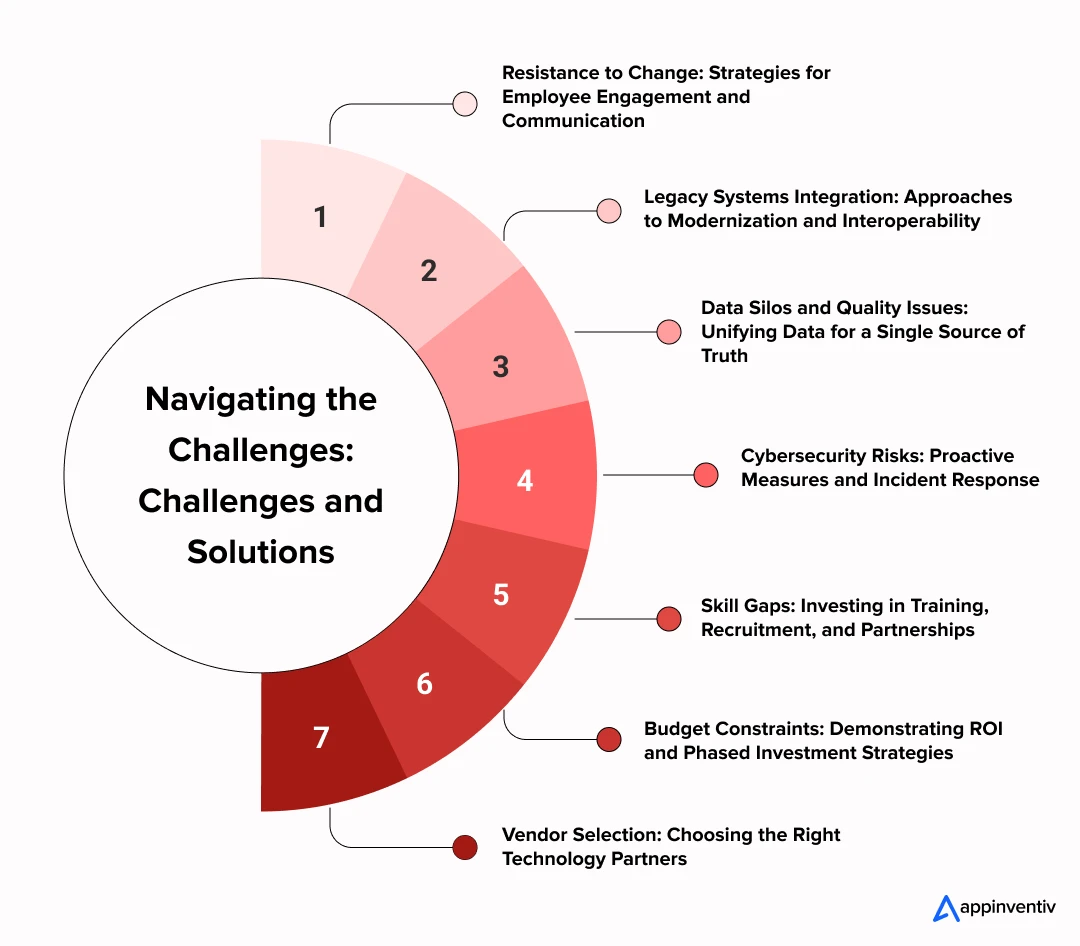
Resistance to Change: Strategies for Employee Engagement and Communication
Challenge: Employees often resist new technologies and processes due to fear of the unknown, job insecurity, or comfort with existing routines.
Solution: Implement comprehensive change management programs, emphasizing transparent communication about the “why” behind the transformation. Involve employees in the process, provide adequate training, and highlight the personal and organizational benefits of the changes.
Legacy Systems Integration: Approaches to Modernization and Interoperability
Challenge: Integrating modern digital solutions with outdated legacy systems can be complex, costly, and time-consuming, creating data silos and operational inefficiencies.
Solution: Adopt a phased approach to modernizing legacy systems, prioritizing critical systems for upgrade or replacement. Utilize API-led integration strategies to create seamless data flow between old and new systems, ensuring interoperability.
Data Silos and Quality Issues: Unifying Data for a Single Source of Truth
Challenge: Data often resides in disparate systems, leading to inconsistent information, poor data quality, and a fragmented view of customers or operations.
Solution: Implement a robust data governance framework and invest in data integration platforms. Establish a “single source of truth” by centralizing and harmonizing data, enabling better decision-making and a more effective digital transformation strategy.
Cybersecurity Risks: Proactive Measures and Incident Response
Challenge: Increased digitalization expands the attack surface, making enterprises more vulnerable to cyber threats, data breaches, and regulatory penalties.
Solution: Adopt a proactive cybersecurity posture, including regular risk assessments, employee training, multi-factor authentication, and robust incident response plans. Partner with cybersecurity experts to fortify your digital defenses.
Skill Gaps: Investing in Training, Recruitment, and Partnerships
Challenge: The shortage of digital skills in Australia can hinder the ability to execute and maintain digital initiatives effectively.
Solution: Develop internal upskilling and reskilling programs, invest in continuous learning platforms, and strategically recruit talent with critical digital competencies. Consider partnering with companies providing digital transformation consulting for enterprises to bridge immediate skill gaps.
Budget Constraints: Demonstrating ROI and Phased Investment Strategies
Challenge: Justifying significant digital investments can be difficult, especially for businesses with tight budgets. This shifts their focus on short-term gains over long-term strategic value.
Solution: Clearly define measurable KPIs and build a strong business case demonstrating the potential ROI of digital initiatives. Adopt a phased investment strategy, starting with projects that offer quick wins and clear value, building momentum for larger transformations.
Vendor Selection: Choosing the Right Technology Partners
Challenge: Selecting the right technology vendors and implementation partners from a crowded market can be overwhelming. Thai leads to suboptimal choices or failed projects.
Solution: Conduct thorough due diligence, assessing potential partners based on industry expertise, proven track record, client testimonials, technological capabilities, and awards and partnerships. Look for partners who understand the nuances of digital transformation technology for enterprises and can offer end-to-end support.
Key Opportunities for Australian Businesses
In spite of the challenges, the Australian market offers strong chances for those businesses that are willing to undertake a future-oriented digital transformation strategy.
Access to the Latest Emerging Technologies
AI, Machine Learning, IoT, Blockchain, and so on; Australia boasts a fast-growing innovation ecosystem with access to the latest technologies. Applying AI for predictive analytics, IoT for operational insights, or blockchain for supply chain transparency can open up substantial competitive differentiators and drive the digital transformation technology for enterprises.
Taking Advantage of Cloud Computing
Cloud adoption in Australia is growing rapidly, offering unmatched scalability and flexibility, making a well-planned cloud migration strategy for enterprises in Australia essential for long-term modernization Australian companies are increasingly adopting multi-cloud strategies, recognizing the benefits of lower infrastructure costs and greater agility, which are essential components of any contemporary digital transformation strategy.
Improved Customer Experience (CX)
Digital solutions allow Australian companies to offer extremely personalized customer experiences through various touchpoints. From AI-driven chatbots to flawless omnichannel experiences, enhancing CX is an immediate byproduct and a significant benefit of digital transformation for enterprises in Australia.
Operational Efficiency & Automation
Robotic Process Automation (RPA) and smart workflows can effectively streamline operations, minimize human mistakes, and release resources for higher-priority projects, leading to a more efficient business digital transformation in Australia.
New Business Models & Revenue Streams
Digital transformation offers opportunities for new business models. Subscription models, platform services, and monetizing data are only some of the digital transformation instances that can come out of an effective digital strategy transformation.
Competitive Edge
By embracing digital innovation, Australian enterprises can set themselves apart from their competitors, attract top talent, and build stronger customer loyalty. This strategic advantage is a primary driver behind a comprehensive digital transformation strategy for Australian enterprises.
The Practical Roadmap: 7 Key Steps to Digital Transformation
Starting a digital transformation roadmap for business in Australia must be done with a systematic, step-by-step process. This seven-step process of thoughtful digital transformation offers a practical roadmap for Australian businesses to follow on their journey to success.
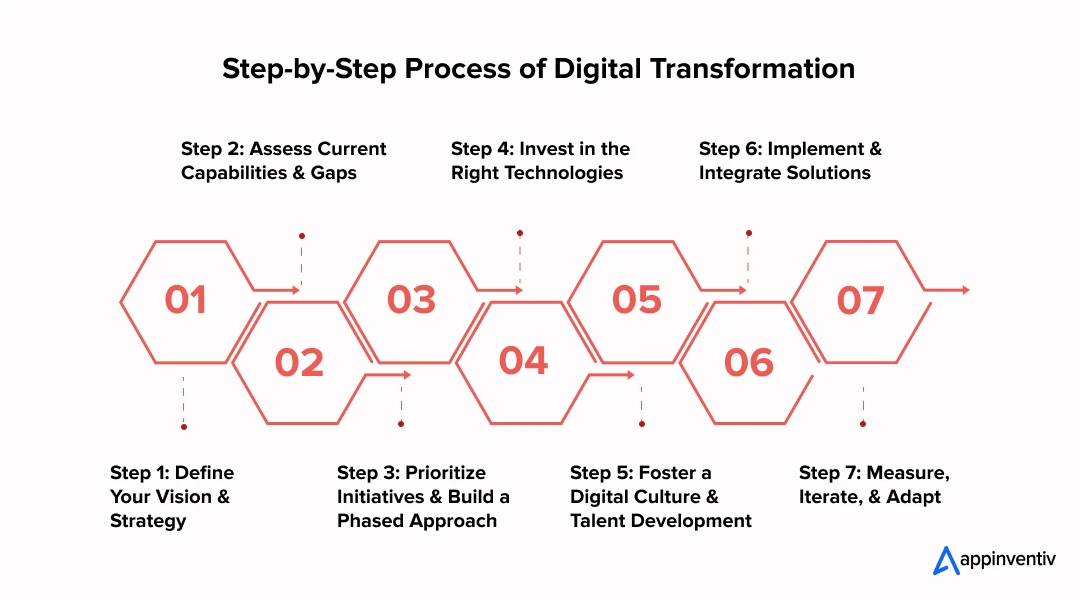
Step 1: Define Your Vision & Strategy (The “Why” and “What”)
Start by properly defining why your company requires digital transformation and what you want to accomplish. This is about establishing a compelling vision that fits into the broader business strategy. What are you solving for? What new opportunities are you chasing? This first step ensures that your digital transformation strategy is more than a technology advancement, but a strategic necessity.
Step 2: Evaluate Current Capabilities & Gaps (The “Where Are We Now?”)
A comprehensive inspection of your current digital maturity, existing infrastructure, processes, and workforce capabilities is crucial. Identify strengths to leverage and weaknesses that need addressing. This involves auditing current systems, understanding data flows, evaluating employee digital literacy, and pinpointing areas where technology can make the most significant impact. This honest self-assessment forms the baseline for your digital transformation roadmap for business in Australia, highlighting the distance between your current state and your desired future.
Step 3: Prioritize Initiatives & Build a Phased Approach
With a clear vision and assessment in hand, prioritize digital initiatives depending on their potential impact and alignment with strategic goals. It’s rarely advisable to attempt everything at once. Instead, develop a phased approach, starting with pilot projects that can drive quick wins and gain value.
This iterative approach supports learning and adjusting, gains momentum and engagement throughout the organization. This ranking is central to a successful and workable digital transformation strategy.
Step 4: Invest in the Proper Technologies (The “How – Technology”)
Picking the right digital transformation technologies in Australia is important. This isn’t about chasing every new trend but choosing solutions that directly support your defined vision and address identified gaps. This might include cloud platforms, AI/ML tools, IoT devices, data analytics solutions, or cybersecurity frameworks.
The focus should be on scalable, integrated, and future-proof technologies that enhance operational efficiency and customer experience. Investing in the appropriate digital transformation technology for enterprises gives your efforts the right direction.
Step 5: Develop a Digital Culture & Talent Development (The “How – People”)
Technology alone cannot drive transformation; people do. Cultivating a digital-first culture that embraces innovation, continuous learning, and agility is paramount. This involves investing in upskilling and reskilling programs for employees, promoting cross-functional collaboration, and establishing leadership that champions digital change.
Addressing the digital transformation challenges for Australian business related to talent and culture is essential for long-term success. A strong emphasis on people ensures that the digital transformation strategy is embraced from within.
Step 6: Implement & Integrate Solutions
This step involves the actual deployment of chosen technologies and the integration of new processes into existing workflows. Effective project management, clear communication, and robust testing are vital to minimize disruption and ensure seamless adoption. It’s crucial to manage interdependencies between systems and ensure data flows smoothly across the new digital ecosystem. This phase brings the digital transformation roadmap for business in Australia to life.
Step 7: Measure, Iterate, & Adapt (Continuous Improvement)
Digital transformation is an ongoing journey, not a destination. Establish key performance indicators (KPIs) to measure the success of your initiatives against your strategic goals. Regularly review progress, gather feedback, and be prepared to iterate and adapt your digital transformation strategy based on insights gained and evolving market conditions. This continuous improvement loop ensures your enterprise remains agile and responsive to future challenges and opportunities.
If you are still unsure about the successful strategy of digital transformation, here is our comprehensive insight to address your other queries: Digital Business Transformation: A Complete Guide
Our expert team can guide you through each step of this roadmap with proven methodologies and industry-specific expertise.
Australian Industry-Specific Use Cases for Digital Transformation
Digital transformation is not an across-the-board approach; its application is vastly different across industries based on unique market requirements, regulatory landscapes, and customer needs. Here, we delve into how a digital transformation strategy for Australian enterprises is emerging in major industries, offering digital transformation examples of success.
Healthcare
Australia’s healthcare sector is embracing digital to improve patient outcomes, ensure data security, and enhance operational efficiency. Telehealth has seen rapid adoption, while AI is beginning to revolutionize diagnostics and personalized treatment plans. Effective patient data management and compliance with regulations like My Health Record are paramount.
Success Story: Telstra Health has been instrumental in advancing digital health solutions across Australia. Their work in developing and implementing telehealth platforms, secure messaging services, and integrated care solutions has significantly improved access to healthcare, particularly in regional areas, and streamlined communication between patients and providers.
Also Read: Importance of Digital Transformation in Healthcare
Financial Services
The Australian financial sector is a hub of fintech innovation, with consumer pressure for a convenient, secure, and personalized banking experience. Digital transformation focuses on leveraging AI for advanced fraud detection, streamlining digital onboarding processes, and enhancing overall customer security and experience.
Success Story: Commonwealth Bank of Australia (CBA) has heavily invested in its digital transformation strategy, particularly in AI and data analytics. They have deployed AI for sophisticated fraud detection, significantly reducing fraudulent transactions. Their mobile banking app has advanced features and personalized recommendations, which serve as a benchmark for customer experience in the Australian financial services industry.
Also Read: How Digital Transformation in FinTech is Shaping the Industry
Manufacturing & Resources
Australia’s manufacturing and resources sectors are leveraging digital technologies to boost productivity, enhance safety, and optimize complex operations. IoT sensors enable predictive maintenance, smart factories improve efficiency, and digital platforms provide greater supply chain transparency. Remote operations are also becoming increasingly sophisticated.
Success Story: BHP, a leading global resources company with significant operations in Australia, has been a pioneer in deploying digital transformation technologies in Australia for remote operations and predictive maintenance. Their Integrated Remote Operations Centres (IROC) allow for the remote management of mines and processing plants, improving safety, efficiency, and productivity through real-time data and advanced analytics.
Retail
The Australian retail sector is undergoing a profound shift, driven by evolving consumer expectations for seamless, personalized shopping journeys. Digital transformation here focuses on integrating online and offline channels, leveraging data analytics for hyper-personalization, and optimizing supply chains for efficiency.
Also Read: How Australian Businesses Can Build a Scalable eCommerce Logistics Strategy for Global Growth
Success Story: IKEA Australia integrated augmented reality (AR) to enhance both offline and online shopping experiences, leading to a significant increase in customer engagement. The retail giant also partnered with Appinventiv for ERP solution development, which led to the development of more than 7 IKEA stores within a single region.

Agriculture
The Australian agricultural sector is adopting digital solutions to combat climate variability, increase yields, and promote sustainable practices. Precision farming, powered by data analytics from sensors and drones, allows farmers to optimize resource use, monitor crop health, and make data-driven decisions.
Many growers are now looking beyond basic farm software and adopting drone-led agriculture automation to solve labour shortages, reduce input costs, and improve decision timing across large properties, especially in broadacre regions.
Success Story: Sundrop Farms in South Australia is a prime digital transformation example in agriculture, utilizing advanced hydroponics and solar power to grow produce in a sustainable, digitally controlled environment. Its novel strategy combines technology for climate management, water management, and optimal yield, showing the potential of digital in sustainable farming.
Future Outlook: Trends That Are Shaping Australian Digital Transformation
The landscape of digital transformation strategy for Australian businesses is dynamic, continually shaped by emerging technologies and evolving global trends. Australian enterprises must keep a keen eye on these shifts to maintain their competitive edge and ensure their digital transformation strategy remains future-proof.
AI and ML: One significant trend is the adoption of Artificial Intelligence and Machine Learning. We will see AI moving beyond automation to truly intelligent decision-making, predictive analytics, and hyper-personalization across all sectors, from customer service to operational optimization.
Composable Enterprises: Another area of importance is the ongoing increase in composable enterprises as companies construct agile, modular IT systems that enable them to assemble and disassemble capabilities at high speed. This agility is a requirement for fast innovation and adaptation.
Meatverse and AR/VR: The Metaverse and immersive AR/VR experiences are also on the horizon, offering new avenues for customer engagement and employee training, though their widespread adoption is still some years away.
Sustainability and Responsible AI: Furthermore, sustainability and responsible AI will become increasingly integrated into digital transformation strategies, with businesses leveraging technology to achieve environmental goals and ensure responsible AI deployment.
The emphasis will turn to not only what is possible with technology, but also how it can responsibly be utilized for the common good and initiate the next wave of digital transformations in business in Australia.
Elevate Your Journey to a Digitally Transformed Australian Enterprise with Appinventiv
The journey to a truly digitally transformed Australian enterprise is multifaceted, demanding strategic foresight, technological acumen, and a commitment to cultural evolution. Now that we know weaving a digital transformation strategy for Australian enterprises is no longer a luxury but a fundamental requirement for survival and growth, partnering with a reputable company offering next-gen digital transformation services becomes an unavoidable choice.
At Appinventiv, we understand the intricacies of this journey. With a proven track record of delivering 3000+ successful solutions and achieving a 97% client retention rate, we are your trusted partner in your digital transformation journey.
Our skilled team of 1600+ tech experts helps Australian businesses at every step, from giving digital transformation consulting for enterprises to crafting a bespoke strategy for digital transformation Australia and implementing cutting-edge solutions and beyond.
Partner with us and see your business fly high in the digital sky.
FAQs
Q. What is digital transformation for Australian businesses?
A. Digital transformation for Australian businesses refers to the comprehensive adoption of digital technologies and strategies to fundamentally change how they operate, deliver value to customers, and engage with stakeholders. It involves integrating digital solutions across all areas of a business, from customer experience and operational processes to culture and business models, to drive efficiency, innovation, and competitive advantage.
Q. What are the main challenges of adopting a digital transformation strategy for Australian enterprises?
A. The main digital transformation challenges for Australian businesses include a persistent talent shortage and skills gap, the burden of legacy systems and technical debt, increasing cybersecurity concerns, complex regulatory compliance, internal resistance to change, and the need to justify significant budget investments with clear ROI.
Q. How long does digital transformation take for an enterprise?
A. The timeline of digital transformation strategy for an enterprise varies significantly based on the project size, complexity, industry, and the scope of the transformation. It is not a one-time project but an ongoing journey. Initial phases can take 6-18 months, while full enterprise-wide transformation and continuous adaptation can span several years.
Q. What technologies are crucial for a digital transformation strategy for Australian businesses?
A. Crucial digital transformation technologies for enterprises in Australia include cloud computing (for scalability and flexibility), AI and ML for data analysis and automation, Internet of Things (IoT) for operational insights, advanced data analytics, cybersecurity solutions, and modern enterprise resource planning (ERP) systems.
Q. How can I find the right digital transformation partner in Australia?
A. To find the right partner for digital transformation consulting for enterprises in Australia, look for one based on industry expertise, Australian market knowledge, full-stack capabilities from strategy to implementation, proven track record with measurable results, awards and certifications, and other judgmental factors.
Evaluate potential partners through client testimonials, case study analysis, regulatory compliance understanding, and collaborative working style.
The right partner should act as a strategic advisor rather than just a technology vendor, providing ongoing support throughout the transformation journey.
Q. How is AI changing digital transformation strategies in Australia?
A. AI is deeply transforming digital transformation strategies for Australian enterprises by facilitating sophisticated automation, predictive analytics, hyper-personalization of customer experience, advanced cybersecurity, and the creation of completely new business models. It enables Australian companies to derive more profound insights from information, streamline operations, and build wiser, more responsive systems.
Q. How can Australian businesses benefit from digital transformation?
A. The benefits of digital transformation for enterprises in Australia include increased operational efficiency, enhanced customer experiences and loyalty, the creation of new revenue streams and business models, improved decision-making through data insights, greater agility and resilience to market changes, and a significant competitive advantage in both local and global markets.
Q. What is the future of digital transformation for Australian enterprises?
A. The digital transformation of Australian businesses in the future will be marked by more integration of machine learning and artificial intelligence, growth of composable architecture to be more agile, more emphasis on ethical AI and sustainability, and further innovation of immersive technologies such as the metaverse for new engagement models. It will be an ongoing process of adaptation and creation.
Q. What business areas should we prioritize for digital transformation in Australia?
A. For business digital transformation in Australia, common priority areas include customer experience (CX) enhancements, operational efficiency improvements (e.g., supply chain, internal processes), data analytics and insights, cybersecurity infrastructure, and talent development/upskilling. The specific priorities will depend on the enterprise’s current digital maturity and strategic objectives.


- In just 2 mins you will get a response
- Your idea is 100% protected by our Non Disclosure Agreement.

How To Build a Digital Twin App? All You Need To Know
Key takeaways: IoT, AI, cloud computing, and data analytics are the main technologies for making real-time, predictive digital twins. Digital twins are revolutionizing the manufacturing, healthcare, and energy sectors and providing significant operational efficiency and cost reduction. 5G, edge computing, and AR/VR not only lift digital twin performance but also provide fast data processing and…

How Enterprises Can Successfully Integrate Emerging Technologies into Their Workflows
Key Takeaways Big changes fail when rushed. Begin with small pilots, measure results, and use emerging tech to scale without breaking what works today. Clean, connected data and strong security are the backbone of successful technology integration. Get those right before layering on AI, IoT, or automation. Don’t chase every new tool. Match tech to…

Digital Transformation Strategies You’ll Wish You Knew Sooner
Key takeaways: Think Big, Not Small: Digital transformation market will reach USD 3,289.4 billion by 2030. Update Legacy Tech: Outdated systems? Modernize them now to boost efficiency and save costs. Go Cloud and API First: Focus on flexible, scalable cloud solutions and APIs for faster, more efficient operations. Make Tech Work for Business: Your tech…
